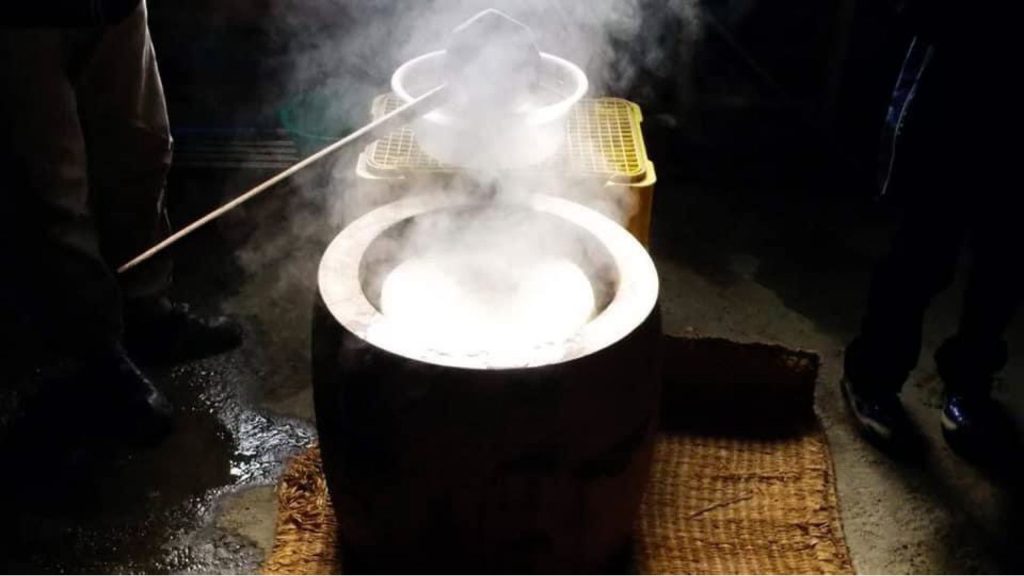
The rice cake pounding at the end of the year is no longer seen. Occasionally, children’s associations, neighborhood associations, and children’s centers hold mochitsuki events. The diet has become richer, and rice cakes are also sold at shops all year round. However, according to a survey, 77.4% of people like mochi. Furthermore, when asked when they eat it, 61.8% answered that they “mainly eat it during the New Year” and 23.2% answered that they “eat it on a regular basis regardless of the season.” In addition, 56.6% of the respondents “decorate kagami-mochi”, and it seems that the tradition of New Year’s rice cakes is still preserved. Mochi eaten on New Year’s Day is usually eaten as ozoni. For the mochi, it is common to use square mochi in eastern Japan and round mochi in western Japan. Also, how to eat mochi, seasonings, and ingredients vary depending on the region. The other is kagami mochi. Toshigami-sama, who brings happiness for the new year, is welcomed to your home with rice cakes prepared for the New Year. Obon and New Year’s are associated with Buddhism and New Year’s with Shinto, respectively.
年末のお餅つきもすっかり見かけなくなりました。時たま子ども会や町内会、児童館などで餅つき大会を実施するところがある程度です。食生活が豊かになり、お餅も年がら年中お店で売っています。しかし、あるアンケート調査では、お餅が好きな人は77.4%で、食べる時期を聞いたところ、「主にお正月に食べる」は61.8%、「季節を問わず、普段から食べる」は23.2%、となっています。また、「鏡餅を飾る」人は56.6%で、意外にお正月とお餅の伝統は残っている様です。お正月に食べるお餅は大概「お雑煮」として食べます。そのお餅も、東日本は角餅、西日本は丸餅をを使うのが一般的です。また、お餅を煮て食べるのか焼いて食べるのか、醤油味か味噌味かなど、食べ方や味付け、入れる具材も地域によって様々です。もう一つはお鏡餅です。新しい年の幸福を運んできてくれる年神様を、お鏡餅を用意して、自宅にお迎えしておもてなしをします。お盆が仏教と、お正月は神道と、それぞれが結び付いた日本の二大伝統行事です。
